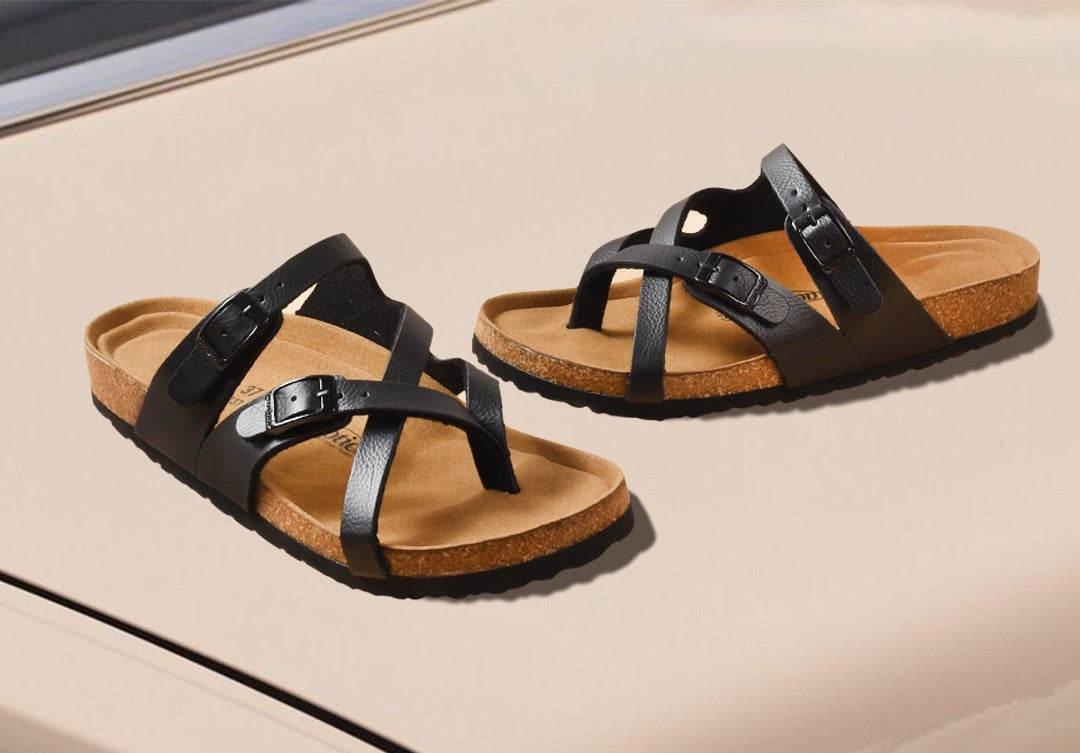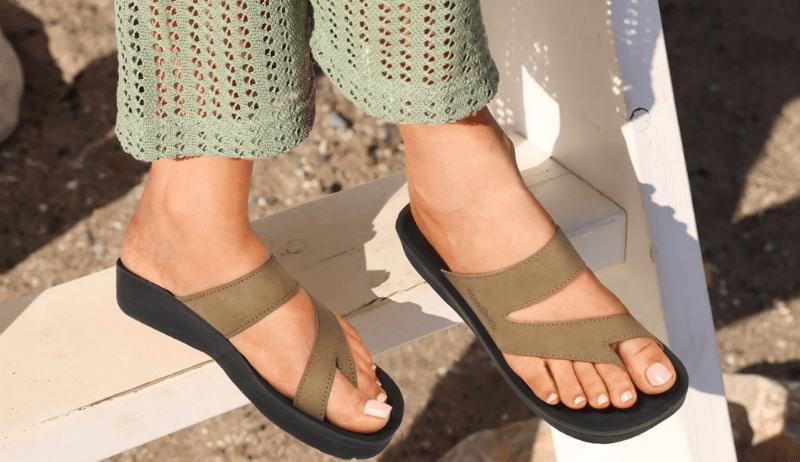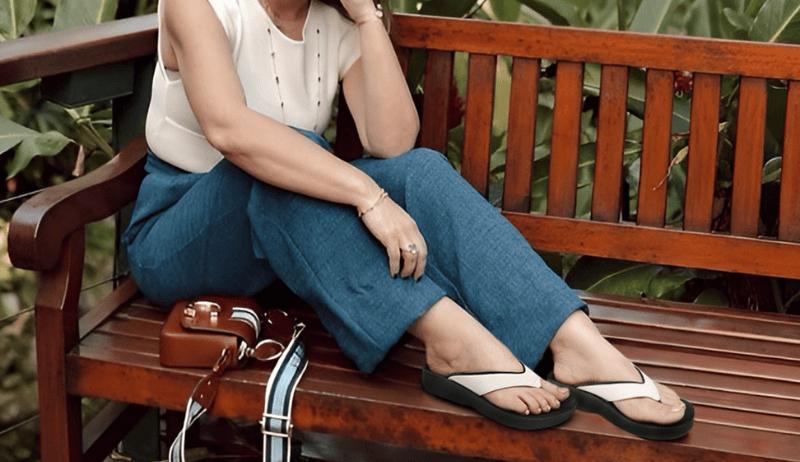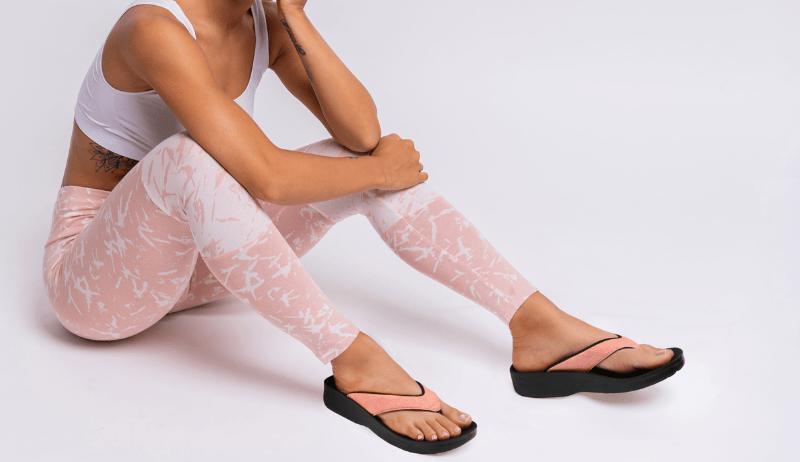Your feet deserve the best support possible, especially when you spend hours standing or walking. Memory foam and cork footbeds offer distinct advantages for your daily comfort. Memory foam contours to your exact foot shape, providing personalized cushioning that feels cloud-like with each step.
Cork footbeds, however, deliver natural support that molds to your feet over time while offering excellent temperature regulation. Your choice between these materials will impact not just your immediate comfort but the long-term health of your feet. The right footbed makes all the difference in how your shoes perform for your needs.
Memory Footbeds
Memory foam footbeds consist primarily of polyurethane materials that manufacturers enhance with additional chemicals. These additions create the soft, cushioning properties you feel with every step. The foam responds to your body heat, which allows it to mold perfectly to your unique foot shape.
Benefits
When you slip into shoes with memory foam footbeds, you will experience immediate comfort. The plush, cushioned feel cradles your feet from the first wear. Your feet receive personalized pressure relief as the material conforms exactly to your foot's contours, eliminating painful pressure points that often develop with standard insoles.
Drawbacks
Your feet need proper support that memory foam often fails to provide. The lack of sufficient heel stability can lead to foot fatigue if you stand for extended periods. You will notice the material breaks down quickly, which forces you to replace your footbeds more frequently than other materials. The polyurethane in memory foam poses environmental concerns, as the manufacturing process creates products that will not biodegrade naturally.
Cork Footbeds
Cork footbeds come from the bark of cork oak trees, making them a completely natural material. The harvesting process removes only the outer bark, which allows the trees to regenerate and produce more cork over time. Your footbed contains thousands of tiny air cells that create its unique properties.
Benefits
You receive firm support from cork footbeds that gradually adapt to your foot's unique shape. This creates customized arch support that aligns your feet properly. Your joints experience less stress thanks to the cork's excellent shock absorption qualities.
The material has maintained its supportive structure for years so you won't need frequent replacements. Your feet stay fresher because cork naturally fights bacteria and wicks away moisture. You also make an environmentally responsible choice, as cork harvesting sustains trees and traditional farming communities.
Drawbacks
Your new cork footbeds need time to adapt to your feet. This break-in period varies but results in a perfect fit once completed. If you expect the immediate softness of foam materials, you might find the initial firmness uncomfortable. The footbeds feel rigid at first but will transform into your perfect foot companions with patience.
Comparative Analysis of Cork Footbed and Memory Foam Footbed
Support and Stability
Cork footbeds provide consistent arch support, maintaining proper foot alignment throughout the day. You will notice significant benefits if you suffer from plantar fasciitis or flat feet, as Dr. Saylee Tulpule (@thesoledoctor) confirms that the structured nature of cork delivers superior support for these conditions.
The firm foundation of cork helps your feet maintain healthier positioning. Memory foam initially feels comfortable but fails to offer the necessary support structure your feet need during prolonged standing or walking. It also lacks proper reinforcement for your arches, which can lead to discomfort after extended wear.
Durability and Longevity
Your cork footbeds will serve you for years as the material maintains its form despite regular use. Cork resists compression and springs back to its supportive shape even after you wear your footwear daily.
Memory foam quickly surrenders to pressure and begins to compress within months of regular use. Therefore, memory foam footbeds must be replaced much more frequently, which increases long-term costs and inconvenience.
Environmental Impact
Cork harvesting respects nature, as workers remove only the bark while the tree thrives. Your choice of cork has supported sustainable forestry practices and traditional harvesting methods for centuries.
Memory foam production involves petroleum-based chemicals that create a much larger carbon footprint. Your purchase of synthetic materials contributes to increased chemical manufacturing and eventual non-biodegradable waste.
Comfort and User Experience
When you first step into memory foam footwear, you feel the immediate softness, which provides pleasant short-term comfort. This initial sensation appeals to many shoppers seeking instant gratification.
Cork delivers a balanced experience that combines adequate cushioning with essential support. Your feet benefit from cork's adaptive nature, which promotes better alignment and reduces fatigue during all-day wear. The superior structure of cork enhances your foot health over time, even though it lacks the plush feel of memory foam.
Suitability for Different Users
Memory foam footbeds work best if you prioritize immediate comfort during brief activities. Your feet will appreciate the soft cushioning when you need short-term relief without concerns about structural support. You benefit most from memory foam if your feet don't require unique accommodation for alignment issues.
Cork footbeds are ideal if you need consistent support for conditions like plantar fasciitis or flat feet. They reinforce your arches to maintain proper alignment throughout extended wear periods.
Cork delivers better value over time, maintaining its supportive properties far longer than alternatives. Cork becomes your optimal choice when you want footwear that combines health benefits with ecological responsibility.
The Bottom Line
Your choice between memory foam and cork footbeds ultimately depends on your needs. Memory foam offers immediate cushioning that is ideal for short-term comfort, while cork provides superior support and longevity for foot health. Consider cork footbeds if you need structural support for conditions like plantar fasciitis or value sustainability. Choose memory foam if instant softness matters most to you. The right footbed enhances your walking experience and protects your feet. Your comfort deserves this careful consideration.
Frequently Asked Questions
What are the disadvantages of memory foam insoles?
Memory foam insoles offer cushioning by conforming to your foot's shape but may lack adequate support and heel stability, potentially leading to foot fatigue. They can also retain heat, causing feet to feel warmer, and tend to compress over time, reducing their effectiveness and requiring frequent replacements.
Is cork a good insole?
Yes, cork insoles are beneficial due to their natural shock absorption, moisture-wicking, and antimicrobial properties, which help keep feet dry and comfortable. Additionally, cork molds to the foot's shape over time, providing personalized support and reducing foot fatigue.
Is more cushioning better for walking?
While cushioning in walking shoes provides comfort and shock absorption, excessive cushioning may compromise stability and support. It's essential to find a balance that offers adequate cushioning without sacrificing proper foot alignment and control.






